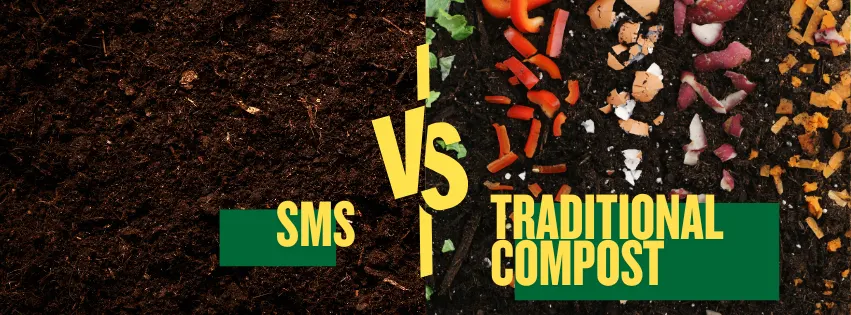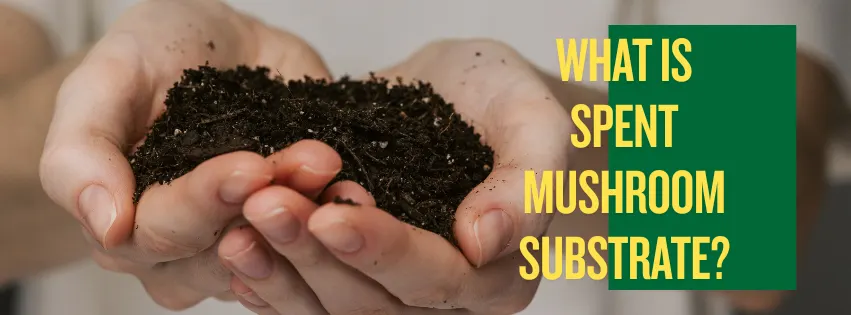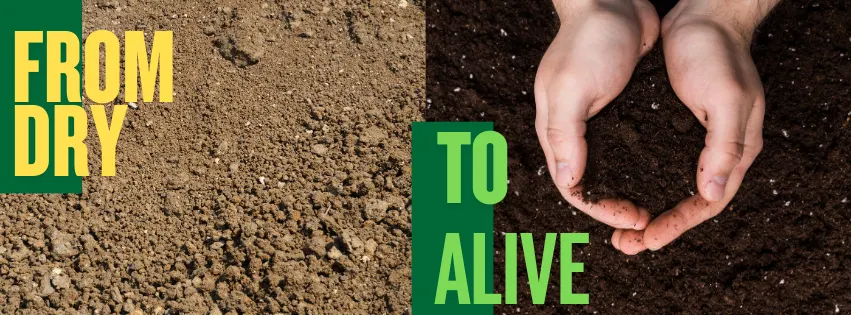SMS vs Traditional Compost: What’s Happier for Your Soil?

Soil’s Silent Battle
Healthy soil is the foundation of every harvest. For centuries, traditional compost has been the trusted way to return organic matter to the land. But today, a new player is winning the hearts of farmers and gardeners — Spent Mushroom Substrate (SMS), also known as used mushroom compost or mushroom soil.
Both nourish the soil, but SMS is proving to be the smarter, more efficient solution for modern agriculture.
As the Indian proverb says, “Mitti sona ugati hai, bas usse zinda rakhna zaroori hai.” (Soil grows gold, but only if we keep it alive.)
What is SMS (Mushroom Compost)?
SMS is the leftover growing medium from mushroom cultivation. A blend of straw, poultry manure, gypsum, and organic additives — once mushrooms finish growing, this “used” soil is far from waste.
Instead, it becomes a nutrient-rich organic soil conditioner that:
Improves soil aeration and texture.
Releases nutrients slowly and steadily.
Balances acidic soils thanks to its natural calcium content.
Retains moisture, reducing irrigation needs.
In simple words: SMS is mushroom waste turned into a farmer’s gold.
What is Traditional Compost?
Traditional compost is made by decomposing farmyard manure, kitchen scraps, crop residues, and green waste. It produces a humus-rich material that increases microbial activity and enriches garden soil.
It remains a trusted tool for small-scale gardening and organic farming.
SMS vs Traditional Compost: A Practical Comparison
| Feature | SMS (Mushroom Soil / Used Mushroom Compost) | Traditional Compost |
|---|---|---|
| Nutrient profile | Rich in organic matter & calcium → improves acidic soils & field crops | Balanced nutrients, great for vegetables & gardens |
| Nutrient release | Slow and long-lasting → less leaching, steady growth | Quick release → faster effect but short-term |
| Soil benefits | Improves structure, water retention, aeration | Builds humus, enhances microbial diversity |
| Eco-benefit | Recycles mushroom industry waste → true circular farming | Recycles farm & kitchen waste, but needs time & labor |
| Cost & scale | Low-cost, bulk available near mushroom farms | Variable cost, better suited for small-scale use |
Why SMS is the Smarter Choice
-
For Farmers: SMS is affordable in bulk, making it ideal for large fields, especially in mushroom-growing states like Punjab, Haryana, and Uttarakhand.
-
For Soil Health: Its slow nutrient release keeps soil fertile longer without frequent reapplication.
-
For Sustainability: Using SMS means turning waste into wealth, supporting circular agriculture waste management.
-
For Climate Challenges: SMS retains more water, making it a climate-smart choice in drought-prone areas.
Traditional compost is good, but SMS is designed by nature and perfected by science for today’s agricultural needs.
Indian & Global Context
-
In Europe and North America, mushroom compost is widely used as a sustainable alternative to synthetic fertilizers.
-
In India, huge amounts of SMS are often discarded near mushroom farms — a missed opportunity. If used wisely, SMS can regenerate Indian soils, support natural farming, and increase crop yields without relying on chemicals.
As Sadhguru says, “If we do not take care of our soil, we will leave behind a planet that is no longer green but brown.” SMS is one way to take care of it.
Soil’s Happiness Formula
Compost will always remain a respected part of farming tradition. But SMS is the smarter, eco-friendly compost alternative that matches the scale and challenges of modern farming.
👉 If you are a farmer near a mushroom hub, SMS is not just an option — it is your soil’s best friend.
Let’s give back to the soil what it truly deserves — living nutrition that regenerates the land for generations to come.
Every handful of SMS is a step towards sustainable farming. Join us in recycling mushroom waste into living soil



Pingback: How to Use Mushroom Compost for Vegetable Gardens -
Pingback: How Mushroom Compost Boosts Soil Health & Yield -